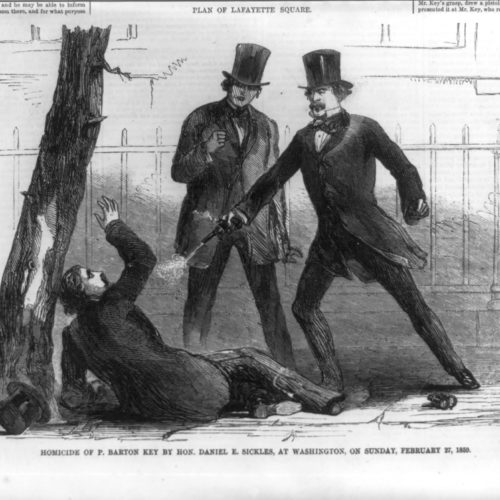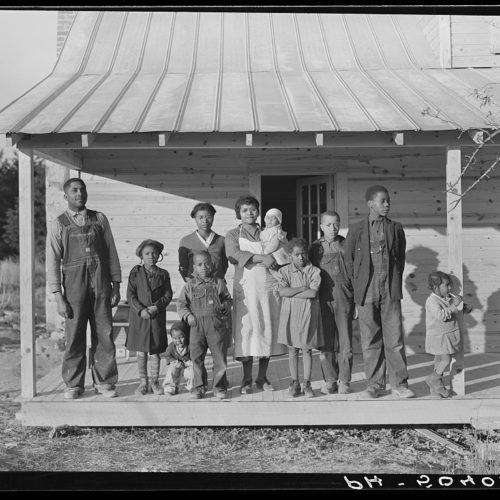Yellow fever is one of the world’s most deadly diseases. Symptoms at the start seem similar to a mild flu, but for some people escalate to include jaundice (hence the name yellow fever), as well as severe headache, fever, muscle pain, nausea, vomiting, and fatigue. Approximately half of those who develop the harsher symptoms will die within a week or two. Today, an effective vaccine exists, and the origin story of that breakthrough has deep roots in foundation philanthropy. If not for nearly three decades of scientific work sponsored by the Rockefeller Foundation (RF), the vaccine might never have come to be.
A Dangerous Scientific Undertaking
It would be an understatement to say that the road to success in fighting yellow fever was bumpy. Six scientific researchers supported by the RF died in the field during the quest for an effective vaccine. One of them, bacteriologist Hideyo Noguchi, remains revered in his home country, Japan. With his portrait on the 1,000 yen note, Noguchi is perhaps the only foundation staff member ever to be commemorated on any nation’s currency. Noguchi came to the United States in 1900, and shortly thereafter began working in Simon Flexner’s laboratory at the Rockefeller Institute for Medical Research, founded by John D. Rockefeller in New York City in 1901.
Working Towards Global Eradication
The Foundation’s work on yellow fever dates back to its earliest history. In 1913, shortly after its incorporation, RF officers created the International Health Commission (later renamed the International Health Division, or IHD) to promote “public sanitation and the spread of knowledge of scientific medicine.” Shortly thereafter, in October 1914, soon-to-be IHD Director Wickliffe Rose penned a report outlining potential strategies to eradicate the disease, whose causes and potential cures remained unknown. Over the next three decades, yellow fever programs would become a top IHD priority. Indeed, roughly one-half of the division’s total budget went toward initiatives that sought to eliminate the disease during this time.“Yellow Fever,” Rockefeller Foundation: A Digital History.
This focus was motivated partly by larger geopolitical concerns. In 1914, Rose met with U.S. Army Surgeon General William C. Gorgas, who had previously worked to eradicate yellow fever in Cuba and the Panama Canal Zone, about potential new avenues for the IHD to explore. Gorgas informed Rose about the threat yellow fever posed to global health, particularly as new trade routes developed through the Panama Canal.Wickliffe Rose, “Yellow Fever: Feasibility of its Eradication,” Rockefeller Foundation records, RG 5, Series 2, Rockefeller Archive Center.
Beginning in Ecuador
In turn, the RF appointed Gorgas to head a yellow fever commission in 1916 to study the disease in South America. Noguchi came from New York to join the team in Ecuador, and within nine days of arriving, believed he had identified the pathogen which causes the disease. But Noguchi had erroneously concluded that yellow fever was caused by a bacterium rather than a virus — a mistake that would have serious consequences for him later.
Indeed, the commission did succeed in eliminating the disease in Guayaquil, Ecuador, and this helped spark additional campaigns across the globe.John Farley, To Cast Out Disease: A History of the International Health Division of the Rockefeller Foundation (1913-1951) (New York: Oxford University Press, 2004), 90-92.In retrospect, however, the success in Ecuador likely resulted less from Noguchi’s faulty vaccine than from Gorgas’s time-tested method of vector control — that is, destroying the mosquito populations that carry the disease and then infect humans. While still considered important to prevention today, vector control doesn’t guarantee the same level of protection to individuals that a vaccine offers.
Going Global with Mistaken Conclusions
Building upon the victory in Ecuador, the RF launched a major yellow fever program in Mexico in 1920, and joined with the government of Brazil in 1923 to establish the Oswaldo Cruz Institute in Bahia, with laboratories dedicated to vaccine research. In 1925, the Foundation expanded its work to Africa, launching the West Africa Yellow Fever Commission with laboratories in Lagos, Nigeria and Accra, Gold Coast (present-day Ghana).
Noguchi traveled to Africa in 1927, after a former colleague from the Latin America team, Dr. Adrian Stokes, succumbed to yellow fever. Stokes’s death put a question mark onto Noguchi’s earlier findings — confirming the doubts that had already arisen in the scientific community. In 1928, perhaps overestimating his own immunity, Noguchi also contracted yellow fever. He died 10 days later.
For all his achievements in combating infectious diseases at the Rockefeller Institute in New York, from developing a skin test for syphilis to an antiserum for Rocky Mountain spotted fever, not to mention several nominations for the Nobel Prize, Noguchi’s yellow fever vaccine, which he had used on himself, proved impotent.
Watch: Jungle Yellow Fever, c.1930
A Second Attempt at the Answer
A few years later, in 1930, the RF hired South Africa-born scientist Max Theiler, of Harvard Medical School’s Department of Tropical Medicine, to spearhead vaccine development at the IHD’s yellow fever lab in New York. It had been Theiler’s Harvard team that conclusively proved yellow fever was not caused by a bacterium, per Noguchi’s theory, but by a filterable virus.
For the next six years, Theiler worked to isolate a less potent yellow fever strain that would produce immunity in humans.
Eventually Theiler succeeded, developing a vaccine called 17D that was based on a weak form of the virus. Dr. A.J. Warren, Assistant Director of the IHD, was the new vaccine’s first test subject in 1936. When he remained asymptomatic and produced blood that inoculated mice from the disease, Theiler knew he had created an effective antidote. Rockefeller Foundation Trustees Bulletin, 1937, “Yellow Fever Vaccination,” February 1937, Rockefeller Foundation records, Trustees Bulletins, Rockefeller Archive Center; Angela Matysiak, Health and Well-Being: Science, Medical Education, and Public Health (Rockefeller Foundation Centennial Series) (New York: Rockefeller Foundation, 2014), 121-22.
Success at Last: Millions Immunized
It did not take long for the vaccine to find far wider application than anyone had previously imagined it would. As the United States prepared to enter World War II, the US Army asked the RF to step up manufacture of 17D for military personnel stationed abroad. In a patriotic gesture, RF President Raymond Fosdick agreed to immunize the entire US military free of charge. In 1941, the year the US officially entered the war, over 4 million RF-made doses of the vaccine had been distributed around the world. Over the next four years, roughly another 34 million were produced and distributed.Fosdick, Raymond B., The Story of the Rockefeller Foundation. (New York: Harper & Brothers, 1952), 68. In 1951, Theiler won the Nobel Prize in Physiology or Medicine. U.S. National Library of Medicine, The Wilbur A. Sawyer Papers: Controlling the Disease During World War II, 1939-1944; “Rockefeller Foundation Provides Yellow Fever Vaccine Free to Government for American Armed Forces, 1942 March 19,” Rockefeller Foundation records, Pamphlet File, Series 1, Rockefeller Archive Center; Matysiak, 122.
Still the Silver Bullet
Today, 17D remains the only yellow fever vaccine in use. Thanks to the RF, people across the globe can reap the benefits of that medical breakthrough. This may prove increasingly important, because yellow fever is on the rise once again. The mass vaccination campaigns that were carried out between 1936 and 1961 resulted in the gradual disappearance of the disease. Until the early 1990s, almost 30 years after the end of the mass preventive immunization campaigns, yellow fever cases remained relatively isolated and intermittent in the countries that benefited from those campaigns. But the interruption of regular mass vaccination campaigns, especially in Africa, has been a huge factor in a resurgence of yellow fever since 1994.
In 2017, a coalition of partners including Gavi, UNICEF, and WHO, came together to create EYE — Eliminate Yellow fever Epidemics. EYE is a long-term, global strategy to address yellow fever’s changing epidemiology, the resurgence of mosquitoes, and the increased risk of urban outbreaks and international spread.
Research This Topic in the Archives
Explore this topic by viewing records, many of which are digitized, through our online archival discovery system.
- “Jaundice,” 1941-1942 October. Rockefeller Foundation records, Projects (Grants), Record Group 1, Subgroup 1.1, International, Series 100, General (No Program), Subseries 100.GEN, Rockefeller Archive Center.
- “Noguchi, Hideyo,” 1918-1958. Rockefeller Foundation records, Projects (Grants), Record Group 1, Subgroup 1.1, International, Series 100, Yellow Fever, Subseries 100.O, Rockefeller Archive Center.
- “(Yellow Fever),” 1928 January-1930 July. Rockefeller Foundation records, Projects (Grants), Record Group 1, Subgroup 1.1, Brazil, Series 305, Yellow Fever, Subseries 305.O, Rockefeller Archive Center.
- “(Yellow Fever),” 1936 March-1938 July. Rockefeller Foundation records, Projects (Grants), Record Group 1, Subgroup 1.1, Brazil, Series 305, Yellow Fever, Subseries 305.O, Rockefeller Archive Center.
- “(Yellow Fever),” 1926-1930. Rockefeller Foundation records, Projects (Grants), Record Group 1, Subgroup 1.1, West Africa Region, Series 495, Yellow Fever, Subseries 495.O, Rockefeller Archive Center.
- “495 – West Africa – Yellow Fever – Beeuwkes, H.,” 1927. Rockefeller Foundation records, International Health Board/Division records, Record Group 5, Correspondence, Series 1, Project, Subseries 1_02, Rockefeller Archive Center.
- “International Health Division – Laboratories – Vaccine Manufacturing,” circa 1905-1980. Rockefeller Foundation records, Photographs, International, Series 100, Rockefeller Archive Center.
- “Yellow Fever,” circa 1905-1980. Rockefeller Foundation records, Photographs, Brazil, Series 305, Yellow Fever, Subseries 305.O, Rockefeller Archive Center.
- “Yellow Fever,” circa 1905-1980. Rockefeller Foundation records, Photographs, Ecuador, Series 317, Yellow Fever, Subseries 317.O, Rockefeller Archive Center.
- “Yellow Fever – 1,” circa 1905-1980. Rockefeller Foundation records, Photographs, West Africa, Series 495, Yellow Fever, Suberies 495.O, Rockefeller Archive Center.
The Rockefeller Archive Center originally published this content in 2013 as part of an online exhibit called 100 Years: The Rockefeller Foundation (later retitled The Rockefeller Foundation. A Digital History). It was migrated to its current home on RE:source in 2022.
Related

Photo Essay: The Rockefeller Sanitary Commission and the American South
Battling hookworm on rural farms laid the groundwork for a global public health system.

The “Insulin Gift”
In 1923, a wealthy philanthropist’s funding helped make life-saving treatment for diabetes available to patients and doctors.

The Commonwealth Fund Brings Hospice Care to America
Care for the dying, not care for a cure, was a new idea in the 1970s.

The Commonwealth Fund and the “Insanity Defense”: Unexpected Outcomes
Our understanding of the insanity defense relies on a book that was an unintended outcome of a Commonwealth Fund grant.








